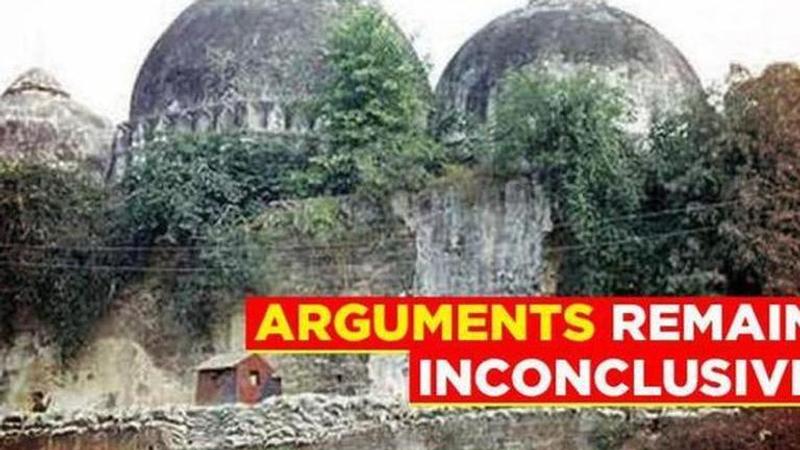Published 21:11 IST, September 25th 2019
Ayodhya case: Muslim parties attack ASI's 2003 report in the SC
The Muslim parties on Wednesday attacked in the SC, the 2003 report of Archaeological Survey of India which had found that a structure pre-existed Babri Masjid

The Muslim parties on Wednesday attacked in the Supreme Court, the 2003 report of Archaeological Survey of India (ASI) which had found that a structure pre-existed the Babri Masjid, saying it does not provide a "verifiable conclusion" and is mostly based on "inferences". The top court was told by the Muslim parties that the report, which was commissioned by the Allahabad High Court to ascertain whether there existed any structure or temple at the disputed site, was an opinion. A 5-judge bench headed by Chief Justice Ranjan Gogoi was told by senior advocate Meenakshi Arora that the report, which has 10 chapters attributed to an author, had a summary that was not attributed to anybody. She said the ASI team comprised 14 members, that was initially headed by BR Mani and later by Hari Manjhi did not hold any meetings among themselves to finalize the summary.
SC bench objects
The bench, also comprising Justices S A Bobde, D Y Chandrachud, Ashok Bhushan and S Abdul Nazeer, questioned Arora's submission saying that the Muslim parties should have objected to the findings in the report before the high court.
"Whatever, may have been your objections, however, strong it may have been, it cannot be entertained by us," said the bench, while referring to the provisions of Civil Procedure Code which empower parties to the title suit to make objections to the court commissioner's report.
Arora said they had raised the issue before the Allahabad High Court but the judges said that it would be decided at the final stage but unfortunately it was not dealt with.
"The report suffers from palpable, apparent inconsistencies. It does not provide a verifiable conclusion and is mostly based on inferences," she said.
'Archaeology is not a natural science'
She further stated that though Archaeology is a science, it is not a natural science like Physics and Chemistry and takes into account various other things like sociology, anthropology, and geology, which means it cannot be exact and accurate.
"Archeology is mostly an expert opinion based on inferences. It is weak evidence which has to be tested along with other things. It only gives perspective," she said, adding that the report should not be taken as it is.
She said a firm in its Geo-Radiology has found that there were 184 anomalies (possible structures) at 0.5 to 5.5 m in depth that could be associated with ancient and contemporaneous structures such as pillars, foundation walls and slab flooring extending over a large portion of the site.
"Interim report of ASI was filed in the high court on June 6, 2003 and it stated that only eight anomalies as per the Geo Penetrating Radar were confirmed after excavation but 14 were not found," she said, adding that later the ASI found only 39 anomalies in total.
Inconclusive arguments
The ASI report appears to be inconclusive with respect to the direction of the Allahabad High Court, she said.
"The index and the headnote to the report clearly indicate the authors of those chapters. Significantly, the summary of report i.e chapter 10, which is the significant analysis of the report of various chapters is not attributed to any of the team members or for that matter even the team leaders. The readers of the ASI report are completely in the dark as to who analyzed the entire data in the report and came to the conclusions in the said 'summary of results. It is important to know which member of the ASI authored because it entails the entire analysis and is not completely reasoned. It is unsigned and it is unknown as to who has done the final analysis of the report and prepared the summary of results. The said summary by itself is therefore not reliable, however, the high court has relied upon the summary of results," she said.
Arora's arguments remain inconclusive and would continue on Thursday. The Allahabad High Court, in its judgment of 2010 on four civil lawsuits, had partitioned the 2.77-acre disputed land equally among Sunni Waqf Board, Nirmohi Akhara and Ram Lalla. Fourteen appeals have been filed in the Supreme Court against the verdict.
Updated 22:09 IST, September 25th 2019




